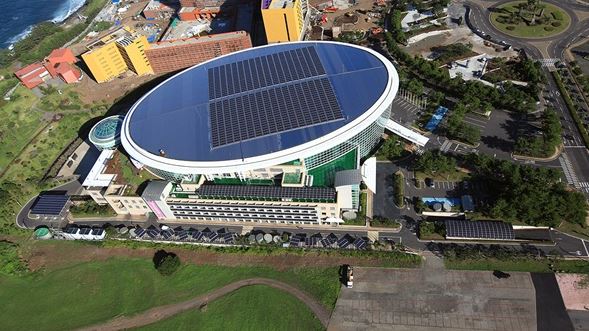
Then how can climate scientists find such evidence? Let’s have a look at possible causes of climate change. The earth’s climate changes when its radiative equilibrium (balance between the incoming solar radiation and the outgoing radiation from the Earth) is disturbed, and there can be natural and man-made causes. The natural factors include changes in the solar radiation such as the 11-year sunspot cycle and the volcanic eruptions which cool the earth as the increased volcanic aerosols injected into the stratosphere block the solar radiation. The human-caused (anthropogenic) factors are dominated by the increase in greenhouse gases due to the burning of fossil fuels, deforestation, and the increase in aerosols due to air pollution. The increase in greenhouse gases warms the earth’s surface by trapping the earth’s radiation while the increase in aerosols induces cooling by reflecting the solar radiation.
In order to understand the past climate changes, we need to know how these natural and anthropogenic factors have influenced the Earth’s climate system. However, this is not a simple task because the Earth’s climate system is composed of several components (atmosphere, ocean, sea-ice, and land) that interact with each other in a complex way. As a useful tool for this, climate scientists have developed global climate models (GCMs, see Figure), which are computer programs of mathematical equations describing the Earth’s climate system based on the physical laws of conservation. We can put the past records of the greenhouse gas concentrations into the GCMs to understand the 20th century’s climate change. We can also simulate the GCMs to predict 21st century’s climate changes under the various scenarios of the greenhouse gas increases. There is another important requirement for obtaining scientific evidence for human-induced climate change: We need to show that the observed change cannot be explained by the Earth’s internal variability which can be generated naturally without any external causes. For this purpose we can simulate the GCMs with greenhouse gases and aerosols being fixed at preindustrial levels, for example. In this way, the observed changes can be compared with climate model simulations carried out with and without human influences, which translates our question into a signal-to-noise problem. Using similar techniques based on computer modeling and statistical analyses, human fingerprints have been identified from the atmospheric and oceanic warming, changes in global water cycle, and snow and ice reductions. Climate scientists are now actively searching for human fingerprints from changes in high-impact weather extremes such as floods, droughts, heat waves, and tropical cyclones.
м Җмһ‘к¶Ңмһҗ © нҸ¬н•ӯкіөлҢҖмӢ л¬ё л¬ҙлӢЁм „мһ¬ л°Ҹ мһ¬л°°нҸ¬ кёҲм§Җ


